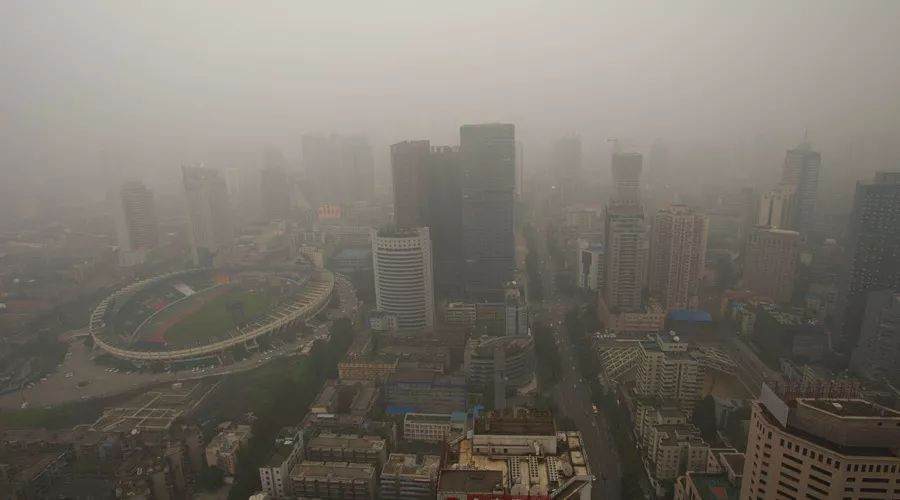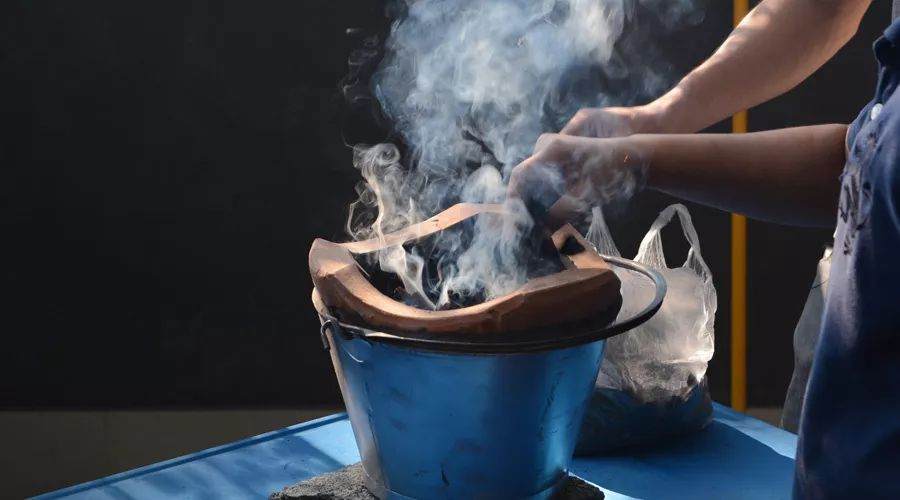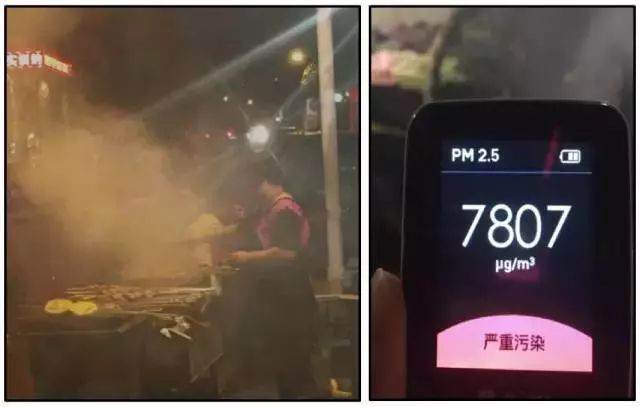As we all know, smoking is the largest cause of lung cancer, and 90% of lung cancer is related to smoking.
In China, lung cancer ranks first in terms of morbidity and mortality. This is closely related to the astonishing 350 million smokers who firmly rank first in the world.
Don’t want to get lung cancer, don’t smoke first!
But someone asked:
What about the remaining 10%?
Why are so many non-smokers suffering from lung cancer?
That’s a good question.
Compared with the United States and China, there is a very strange phenomenon: more than 80% of female lung cancer patients in the United States are smokers (American women smoke very seriously), while in China, the opposite is true, more than 80% of female lung cancer patients never smoke!
What’s going on here?

Non-smokers have a high incidence of lung cancer.
Is it because of smog?

Smog is undoubtedly a serious health hazard and a possible carcinogenic factor.
However, it should not be the main risk factor for non-smoking lung cancer patients.
One of the reasons is:
It takes an average of about 25 years for smoking to cause lung cancer, so even if smog causes cancer, it will take some time to observe the results in a large population.
Whether the smog in recent years will lead to a large increase in lung cancer in China in the future needs to be verified by collecting enough data in more than 10 years.
The second reason is:
The high incidence of lung cancer among non-smoking women in China was obvious in the 1970s and 1980s, when there was no smog problem.
Non-smokers have a high incidence of lung cancer.
Is it secondhand smoke?

Secondhand smoke is a definite carcinogen.
China is one of the countries with the most serious second-hand smoke problem in the world.
More than 700 million women and children in China have long been victims of second-hand smoke at home and in public.
The World Health Organization estimates that secondhand smoke kills 100,000 people every year in China, almost equivalent to a Wenchuan earthquake every year!
Among these 100,000 people, there are many non-smoking lung cancer patients.
Studies have shown that if the husband smokes, the probability of the wife getting lung cancer is more than 2 times that of the general population.
Smokers are free to smoke, but it is wrong to let those who do not smoke smoke with you.
But secondhand smoke is not the main cause of lung cancer among non-smokers!
Non-smokers have a high incidence of lung cancer.
Is it because of indoor air pollution?
Yes!
Secondhand smoke is of course an important carcinogenic factor, but other indoor air pollution sources are often ignored by many people.
For example, if decoration materials such as granite or marble are used in the home, [radon] may exceed the standard. If the concentration exceeds the standard, it will be a carcinogenic risk factor.
Even earlier, many people had to burn stoves, and now some families in rural areas still do.
Boil water for cooking at ordinary times and warm yourself in winter.
Whether honeycomb briquet or firewood stoves, these stoves will more or less produce choking smoke.

Those who have experienced it must remember that when making a fire, they are often fumigated to tears.
If the weather is cold, doors and windows are usually closed, ventilation is extremely poor, and harmful gases and particulate matter are accumulated in large quantities, thus becoming a serious health hazard.
In the 1980s and 1990s, a large number of studies found that the proportion of lung cancer among women in northern China, especially in northeast China, was significantly higher than that in southern China.
Pollution from indoor fuels such as honeycomb briquette, briquette and firewood is considered to be one of the main causes.
Now, with the development and progress of society, stoves are gradually eliminated. Has this danger been relieved?
No.
Because there is another equally serious pollution source-
Cooking fume!

There is a huge difference between Chinese and American people in cooking, that is, we especially like to use hot oil in cooking.
The [prick] sound of the ingredients put into the hot oil pan sounds very fragrant.
But with the melodious [pricking] sound was the billowing lampblack.
Fume is a carcinogen!
Relevant research has been published in Lung Cancer, an international blockbuster academic magazine:
Cooking fume increases the risk of lung cancer for female non-smokers by 3.79 times.
Through publicity, we all know that PM2.5 particles in smog are harmful to human body, and the lampblack produced by cooking will instantly make the indoor PM2.5 value off the charts, and the composition of these lampblack is complex and contains a large number of harmful substances.
Studies have found that PM2.5 can soar dozens of times when frying or cooking in hot oil.
Starting from the addition of hot oil to scallion, ginger and garlic, PM2.5 soared all the way and eventually easily exceeded 2000.
For example, stir-fry a tomato egg:

Source: Author Takes
The barbecue stalls on the roadside are even more bitter.

Source: Author Takes
PM 2.5, such as lampblack, is instantaneous and short-term, and it is not good to compare directly with long-term smog. However, a large number of studies have shown that kitchen lampblack is a potential carcinogenic factor and can also cause many and various diseases, especially respiratory and cardiovascular diseases.
Family members cook with their lives every day…
Do some what to prevent lung cancer at ordinary times?
Carcinogenic risk factors can be roughly divided into two categories: endogenous and exogenous.
Endogenous factors mainly refer to genetic factors and age.
Exogenous factors mainly refer to living habits and risk factors in the environment.
Because endogenous factors cannot be changed and controlled, everyone should pay more attention to avoiding exogenous factors to reduce the risk of lung cancer.
Like wearing a mask.
You must go out when the air quality is not good, and remember to wear N95 mask. On smoggy days, remember to close the doors and windows of your home and turn on the air purifier.
Such as quitting smoking.
This is not much to say, benefit others and benefit oneself.
Another example is to take good protection when cooking.
Not like this:

Source: Author Takes
However, cooking methods such as frying, frying and stir-frying can be used as little as possible. Attention should be paid to the ventilation in the kitchen. Moreover, the smoking machine must be turned on to reduce indoor lampblack.
Before opening, it is generally between 800 and 2000, and after opening, it can be generally controlled between 50 and 80.

Source: Author Takes
In addition, it is suggested that high-risk groups should have regular low-dose chest CT screening every year, which is safer and more effective.
Here, the definition of lung cancer high-risk group is:
- Age ≥ 55 years old, smoking ≥ 30 packs of years, and quitting smoking for less than 15 years; Age ≥ 50 years old, smoking ≥ 20 package years and additional lung cancer risk factors, such as family history, friends who work in a dusty or closed environment for a long time, etc.
The package year is the number of packages smoked per day multiplied by the number of years of smoking. For example, 30 packages per day is an average of one package per day and 30 years of smoking.
As long as there is a small change, there will be great health benefits.
Only when we are in good health can we have the capital to continue our beloved career and enjoy a good life.
May all of you have fewer diseases and good health!

This article has been examined by Dr. Ding Chao of Zhejiang Tumor Hospital.
-References-
1: Cancer Statistics in China, 2015, Cancer J for Clin
2: http://www.uptodate.com/contents/lung-cancer-in-never-smokers
3: http://www.nytimes.com/1981/01/16/us/cancer-study-reports-high-risk-for-wives-of-smoking-husbands.html
4: Indoor Air Pollutionand Risk of Lung Cancer among Chinese Female Non-Smokers. Cancer Causes Control. 2013 March; 24 (3): 439-450.
5: Contrasting male and female trends in Tobaco-Attributed Mortality in China: evidence fromsuccessful nationwide prospective cohort studies. Lancet. 2015 Oct10; 386 (10002): 1447-56.
6: Lung cancer inever-smoker Asian females is driving by oncogenic mutations, most ofteninvesting EGFR.Oncotarget. 2015 Mar 10; 6 (7): 5465-74.
7: Lung cancer in neversmokers-a different disease. Nat Rev Cancer. 2007; 7 (10): 778.
8: Ou SH, Ziogas A, ZellJA. Epidemiology study of never-smokers with non-small cell lung cancer (NSCLC): High percentages of Asian and Hispanic female never-smokers and thesignification of Asian ethnicity (abstract 8004). J Clin Oncol 2008; 26: 15s.
9: Lung cancer incidencein never smokers. J Clin Oncol. 2007 Feb 10; 25 (5): 472-8.
10: Genome-wide association analysis identities new lung cancer susceptibility loci inner-smoking women in Asia. Nat Genet. 2012 Dec; 44 (12): 1330-5.
11: Lung canceroccurrence in never-smokers: an analysis of 13 cohorts and 22 cancer registrations. PLoS Med. 5, e 185 (2008).
Responsible Editor: Leo
Source of cover photo: www.hizy.net Genuine Photo Library
